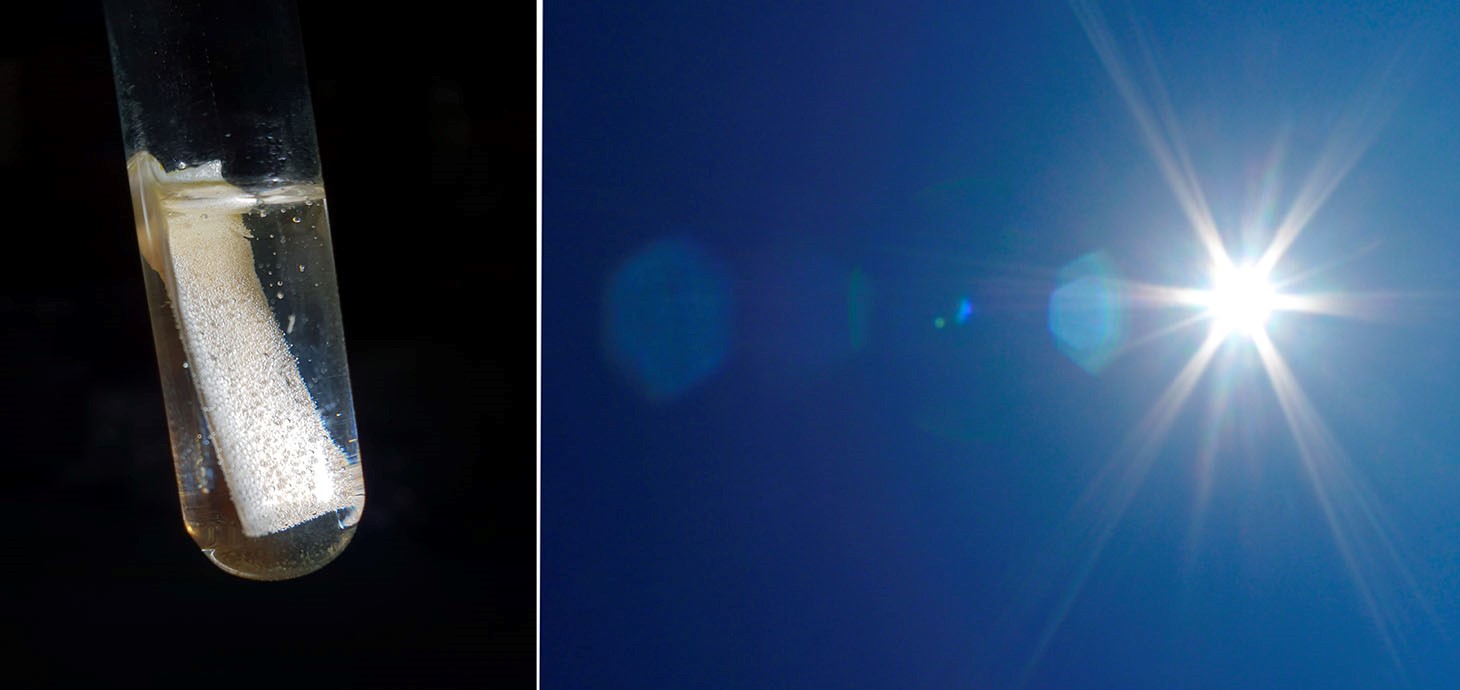These articles are now archived and will no longer be updated.

Tiny hydrogen bubbles evolving from a piece of PET plastic irradiated with light. PET (polyethylene terephthalate) is the plastic used in most water bottles.
Sunlight could be used to convert hazardous medical waste into clean hydrogen fuel, using a new technique being developed by a joint Wales/India team led by Swansea University researchers. The project has just been awarded £47,000 of funding by the Welsh Government.
The NHS already spends £700 million a year disposing of medical waste. The COVID pandemic is creating vast amounts of additional waste, such as masks and other protective equipment.
The Swansea-led team are developing a novel process called photoreforming. This uses sunlight to simultaneously kill viruses and convert non-recyclable waste into clean hydrogen fuel. The process works by using nanostructured semiconductors to drive the degradation of waste and pathogens with sunlight.
Currently, medical waste is disposed of by incineration. In contrast, photoreforming does not generate greenhouse gases and works at ambient temperature. As well as producing hydrogen fuel, the process can also generate organic feedstocks for the chemical industry.
This new research builds on the team’s previous work on generating hydrogen from waste plastics.
The team includes epidemiology experts from India’s King Institute of Preventive Medicine & Research and Thiruvalluvar University. They are helping examine the photocatalysts’ antiviral activity against different pathogens, including SARS-CoV-2, the virus that causes COVID-19. The nanomaterials group at Indian Institute of Technology Mandi are also partners in the project.
The researchers are now actively looking for industry partners to commercialise their technology.
Dr Moritz Kuehnel, project lead and senior lecturer in Chemistry at Swansea University, says:
“Since the outbreak of the COVID-19 pandemic, we have witnessed a global surge in single-use medical waste and PPE polluting the environment such as disposable face masks littering beaches. The NHS already spends more than £700m every year on waste disposal, even before COVID waste. Applying our technology to reprocess just 1% of this waste would save millions and mitigate pollution at the same time.”
Dr Sudhaghar Pitchaimuthu, co-investigator and Sêr Cymru-II Rising Star Fellow at Swansea University’s College of Engineering, adds
“The simplicity and low cost of photoreforming make it easier to implement in countries that do not have an established recycling system. By turning this hazardous waste into a resource, we aim to provide a commercial incentive to collect waste from the environment and prevent littering in the first place.”
Kirsty Williams, Welsh Government Education Minister, said:
“I’m pleased our Sêr Cymru scheme can support this programme at Swansea University, which will help in the fight against the coronavirus while also providing environmental and economic benefits.”
Sustainable futures, energy and the environment - learn more about our research
